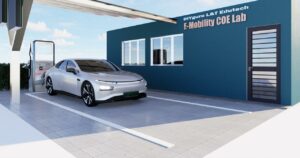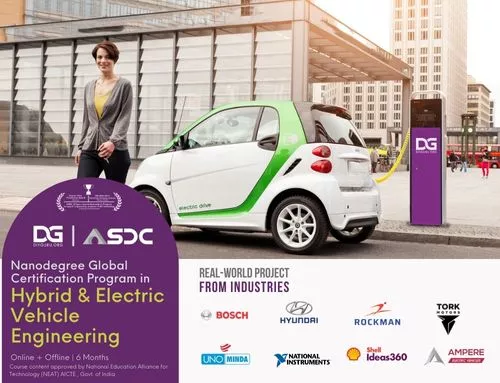Introduction:
Electric transmission is an essential component of any electric vehicle. It is responsible for transmitting power from the electric motor to the wheels and plays a crucial role in the overall performance of the vehicle. In this blog post, we will explore what transmission is, how it works, and why it is important for the future of transportation.
What is electric transmission?

Electric transmission, also known as a powertrain or drivetrain, is the system of components in an EV that work together to transfer power from the electric motor to the wheels. It includes the electric motor, the transmission, the differential, and the driveshaft.
How does electric transmission work?
Electric transmission works by adjusting the speed, torque, and power output of the electric motor to meet the demands of different driving situations. The motor is connected to the transmission, which uses a series of gears to adjust the speed and torque of the motor. The differential then distributes the power to the wheels, allowing the vehicle to move.
Types of electric transmission:

There are several types of electric transmission used in EVs, including:
- Single-speed transmission: This type of transmission uses a single gear ratio to provide the necessary torque for the vehicle to move at different speeds.
- Multi-speed transmission: This type of transmission uses multiple gear ratios to provide a wider range of torque outputs, resulting in better acceleration and improved efficiency.
Benefits of using electric transmission
There are several benefits to using transmission in an EV, including:
- Increased efficiency: Electric transmission helps to increase the efficiency of an EV by allowing the electric motor to operate at a higher speed while still providing the necessary torque to power the wheels.
- Improved acceleration: Electric transmission with multiple gear ratios provide better acceleration and improved overall performance.
- Longer lifespan: Electric transmission has fewer moving parts than traditional gasoline vehicle transmissions, resulting in a longer lifespan and lower maintenance costs.
Challenges facing electric transmission development
Despite the benefits of using transmission, there are still several challenges facing transmission development. One of the biggest challenges is the cost of the components, including the gears and bearings. Another challenge is the weight of the transmission, which can impact the overall performance and range of an EV.
Conclusion:
Electric transmission is a critical component of an EV that allows the motor to transfer power to the wheels. There are different types of transmissions available, and each has its own set of advantages and disadvantages. The benefits of using transmission include increased efficiency, improved acceleration, and longer lifespan. However, there are still challenges facing the development of electric transmission, such as the cost of components and weight of the transmission. As the demand for electric vehicles continues to grow, the development of efficient and reliable electric transmission will be crucial for the future of sustainable transportation.
In conclusion, electric transmission is a vital component of electric vehicles that allows the motor to transfer power to the wheels. There are different types of transmissions available, each with its own set of benefits and challenges. While transmission helps to increase the efficiency of an EV and improve its performance, there are still challenges facing its development. As the demand for electric vehicles continues to grow, the development of efficient and reliable transmission will be crucial for the future of sustainable transportation.
FAQs:
Q1. What is electric transmission in an electric vehicle?
Ans. Electric transmission, also known as a powertrain or drivetrain, is the system of components in an EV that work together to transfer power from the electric motor to the wheels.
Q2. How does electric transmission work?
Ans. Transmission works by adjusting the speed, torque, and power output of the electric motor to meet the demands of different driving situations.
Q3. What are the types of transmissions used in electric vehicles?
Ans. There are two types of transmissions used in electric vehicles: single-speed transmissions and multi-speed transmissions.
Q4. How does transmission improve the efficiency of an electric vehicle?
Ans. Transmission improves the efficiency of an EV by allowing the electric motor to operate at a higher speed while still providing the necessary torque to power the wheels.
Q5. What is the impact of transmission on the acceleration of an electric vehicle?
Ans. Transmission with multiple gear ratios provides better acceleration and improved overall performance.
Q6. How does the weight of electric transmission impact the performance and range of an electric vehicle?
Ans. The weight of transmission can impact the performance and range of an EV by increasing the overall weight of the vehicle and reducing its efficiency.
Q.7 What are the challenges facing the development of transmission?
Ans. The challenges facing the development of transmission include the cost of the components, the weight of the transmission, and the need for advanced manufacturing technologies.
Q8. Why are transmissions important for the future of transportation?
Ans. Transmissions are important for the future of transportation because they are an essential component of EVs and play a key role in reducing emissions and improving efficiency.
Q9. How does the lifespan of transmission compare to that of a traditional gasoline vehicle transmission?
Ans. Transmission has fewer moving parts than traditional gasoline vehicle transmissions, resulting in a longer lifespan and lower maintenance costs.
Q10. Can an electric vehicle operate without a transmission?
Ans. An electric vehicle cannot operate without an electric transmission, as it is an essential component that is responsible for transferring power from the electric motor to the wheels.























